전시
-
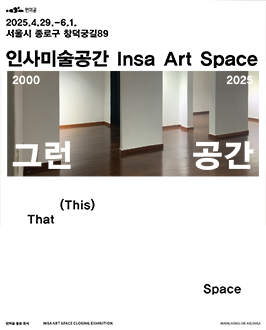 전시중 인미공 종료전시《그런 공간》
전시중 인미공 종료전시《그런 공간》- 전시기간
- 2025.04.29~2025.06.01
- 관람료
- 무료
- 오프닝
- 2025.4.29.(화) 17:00-19:00
- 장소
- 인미공 지하 1층, 1층, 2층, 3층(서울시 종로구 창덕궁길 89)
- 작가
- 김익현, 노재운, 다크-다크투어리스트, 박보마, 슬기와 민, 아트-토커(김맑음, 김명진, 류희연, 문진주, 이선주, 이소라, 지하운, 하수경, 황지원), 엄지은
- 부대행사
- 추후 공지
- 주관
- 인사미술공간
- 주최
- 한국문화예술위원회
- 문의
- ias.info@arko.or.kr/02-760-4617
인미공 종료전시《그런 공간》
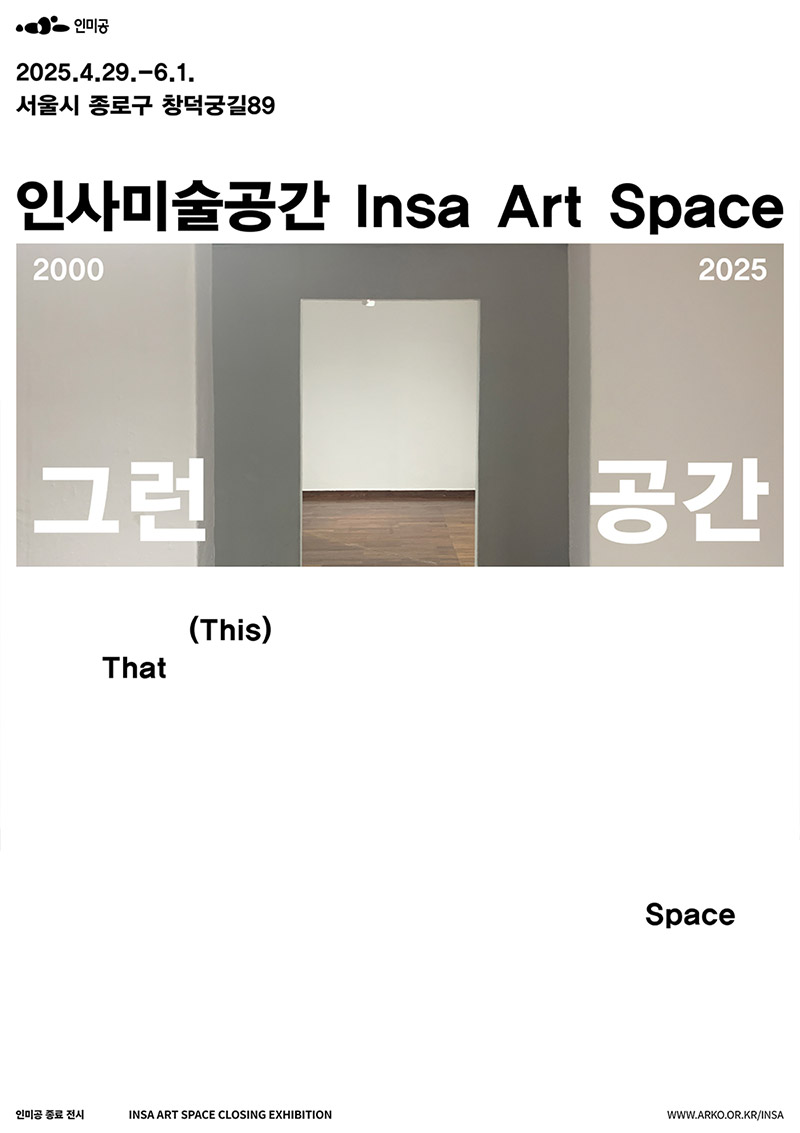
▣ 전시개요
- 제목 : 인미공 종료전시《그런 공간》
- 작가 : 김익현, 노재운, 다크-다크투어리스트, 박보마, 슬기와 민, 아트-토커(김맑음, 김명진, 류희연, 문진주, 이선주, 이소라, 지하운, 하수경, 황지원), 엄지은
- 전시기간 : 2025년 4월 29일(화)-6월 1일(일)
- 운영시간 : 화-일요일, 11-19시 / 월요일 휴관
- 장소 : 인미공 지하 1층, 1층, 2층, 3층(서울시 종로구 창덕궁길 89)
- 관람료 : 무료
- 주관: 인사미술공간
- 주최 : 한국문화예술위원회
▣ 전시개요
지금 앞에 놓인 이미지와 텍스트들은 모두 인사미술공간(이하 인미공)이 남긴 시간의 파편들에서 시작되었다. 문을 닫는 공간, 그래서 과거로 기억되길 선택한 공간, 미래를 상상할 수 없게 된 공간. 그곳에 남겨진 언어와 목소리를 정리하고 설명하는 일은 과연 어떻게 가능한 것일까. 종료를 비관하며 읊조리는 감상적 독백이 아니다. 다만 수많은 녹취록과 메일, 문서, 도록 등의 기록을 앞에 두었음에도 25년간 존재했던 인미공이라는 공간을 말하기 위해서는 어디서부터 그 서사를 더듬어야 하는지, 그중 어떤 지점을 짚어 펼칠 것인가에 대한 고민에 가깝다. 무엇 그리고 어디를. 《그런 공간》은 그 추상적인 질문과 과제를 앞에 두고 인미공을 바라본다.
인미공의 서사와 그 성격은 실상 자료의 순차적 열거만으로 설명하기는 어렵다. 물론 이 공간의 명백한 태생 이유인 ‘지원’으로 이를 간추릴 수도 있겠지만 인미공이 ‘그런 공간’이 될 수 있던 건 단지 그뿐만은 아니었다. 이곳은 전시를 할/볼 수 있는 물리적 공간의 의미를 넘어 누군가에게는 교류나 협업의 장이었고, 연구와 토론, 비평과 비판이 고루 이루어지기도 했다. 그래서 인미공은 경험한 이들에 따라 각기 다른 방식으로 말해지는 ‘그런 공간’이었다. 다른 한편 공공기관이 운영하는 대안적인 성격의 비영리 공간이라는 정체성을 기반으로 새로운 역할을 고뇌하며 과거와 현재, 미래를 동시에 그려야 했다. 그러나 실상 모든 과정이 매끄럽게 흘러가진 않았다/못했다. 때문에 25년의 인미공 그리고 인미공을 바라보는 시선들에는 꽤 차이가 있었다. 이에 《그런 공간》은 인미공을 발화할 때 상기되는 각 단면들을 파악하고, 이들이 어떤 방식으로 관계 맺고 있는지를 탐색한다. 아울러 인미공의 25년과 미술계의 타임라인을 포개어 공간의 역사와 그 종료의 쟁점을 오늘, 나아가 미래로 전달할 방법을 살핀다.
1999년 외환위기로 인해 미술분야 민간지원 급감과 창작 여건 둔화에 처한 미술 정책의 일환으로, 한국문화예술진흥원(현 한국문화예술위원회)은 시각예술 작가들을 위한 지원 공간의 필요성을 인지하게 된다. 그렇게 인사아트센터 3층에서 개관한 인미공은 지원 공모에 선정된 작가들의 전시를 이어갔다. 장기적인 지원의 역할을 넘어서 자체 기획 전시, 프로그램을 통해 대안공간과의 차별화를 도모하던 중 인미공은 관훈동의 학고재 건물(현 갤러리이즈) 3, 4층으로 공간을 이전한다. 이곳에서도 공모 전시는 계속 진행되었으나 2005년에는 이외 다양한 활동으로 눈을 돌린다. 먼저 피진 콜렉티브(임민욱, 프레데릭 미숑), 이미경 작가와의 협업을 통해 작가의 관점과 해석이 개입하는 아카이브를 만들어 향후 프로젝트 및 전시와 역동적으로 연계하는 인미공 아카이브를 구축하기 시작한다. 또한 신진작가 지원, 국제교류 등의 프로그램들도 기획한다. 그리고 2006년 원서동에 위치한 한국미술박물관(구 한국불교미술박물관) 기획전시실을 리모델링하고 이곳으로 이전하여 마침내 인미공만의 독립적인 공간을 운영하게 된다. 지하 1층을 포함해 총 4층으로 구성된 이 독특한 공간에서 인미공은 작품 발표 기회 제공 및 전시 기획 위주의 기능 수행을 탈피하고 “전시 이전과 이후를 연결하는 공간1)을 표방한다. 더불어 국제교류와 세계화에 대한 정책적 관심이 높아지고 인미공에 그 역할이 부여되면서 인미공은 서구는 물론 베트남, 중동 등 제3세계 국가들과 로컬리티에 대한 연구를 진행하고 이를 출판, 전시와 프로그램으로 연속시킨다. 즉 2008년까지는 공간 태생의 이유인 작가 지원을 넘어 전시와 아카이브, 세미나, 워크숍, 출판 등 전시 안팎의 다양한 미술 실천이 서로 밀도를 비슷하게 유지하며 담론을 생산할 수 있도록 이끄는 시기였다. 그렇게 인미공은 미술공간, 공공기관, 조직 등 복잡하게 얽혀있는 정체성과 틀에 부딪히며 자신의 역할을 찾아 나갔다.
그러나 2009년 인미공의 큰 축을 이루던 요소들이 모두 아르코미술관으로 흡수되면서 인미공은 작가 및 기획자를 지원하는 공간으로 다시금 ‘확정’된다. 그럼에도 여전히 인미공은 다양한 창작자들로 북적거리는, 그런 공간이었다. 2009년 차세대예술가육성지원(AYAF), 2016년 한국예술창작아카데미 사업 등 그 이름과 공모 방식이 바뀌어도 여전히 신진예술인 지원을 목표로 한 사업들과 인미공이라는 ‘공간’은 엮여 늘 새로운 예술가들을 만날 수 있는 장소가 되었다. 이후 20주년 아카이브 프로젝트 《인미공 공공이공》(2020년)과 함께 〈인미공 창작소〉(2020-2022년)가, 2021년에는 〈월간 인미공〉(2021-2022년), 전문인 교육 프로그램 〈아트토크〉(2021-2023년)도 운영되었다.
하지만 시간이 지날수록 쌓이는 인미공의 수많은 전시와 프로그램 리스트에도 불구하고, 인미공이 과연 ‘어떤 공간’인지를 묻는 질문의 빈도는 가속되었다. 인미공을 둘러싼 미술계의 모든 것들이 빠르게 변했고 새로움을 탐하는 과정도 급박해졌다. 그러나 인미공은 여전히 ‘지원’, ‘청년’, ‘신진’ 등의 단어를 붙들며 젊지도 늙지도 않는 공간이 되었다. 오래전부터 이어온 불투명한 존속 여부, 밖의 기대와 안의 고뇌의 시차가 벌어지기 시작했다. 인미공을 이뤘던 조각들은 늘 과거의 것이었기에 전처럼 미술 ‘공간’을 넘어서려면 다시 많은 것이 필요했다. 꼭 예산이나 인력 부족만을 의미하는 건 아니었다. 과거의 실험과 실천을 반복 및 참조하면서 어떤 정체성이 지속될 수 있는지, 무엇보다 인미공에 대한 안팎의 믿음이 여전히 남았는지에 대한 것이기도 했다. 방향성과 역할을 끊임없이 갱신해야 했던 인미공은 연속되면서도 완결되지 못한 논의들을 지나 이제 과거의 한 축으로 자리하게 되었다.
이제 서두에 언급한 질문을 다시 소환한다. 맺는말의 문장을 작성해야 하는 이 시점에서 인미공의 무엇 그리고 어디를 설명하거나 볼 것인가. 이에 《그런 공간》은 다른 견해들로 다시 인미공을 채워본다. 참여한 작가들과 기획자들은 자신의 기억을 토대로 인미공을 말한다. 미술계 안팎에 거주하는 이들의 관점들로 그려진 인미공은 과거와 현재, 미래를 교차한다. 여기에는 성과나 결과로써의 인미공이 있거나 혹은 없다. 유령처럼 공간을 배회하는 이미지들이 있다. 또는 인미공이 미술계 그리고 제도와 어떻게 호흡했거나 어긋났는지, 그 사이 비워진 언어들을 어떻게 재구성하거나 해석할지를 묻는 목소리가 있다. 2025년의 인미공은 오늘날 미술의 역할과 그 작동 방식을 캐보는 장소가 되고, 종료의 의미를 물을 때 돌아오는 미완의 대답이 되기도 한다. 그렇게 《그런 공간》은 한 공간의 끝을 문서들의 집합으로 회고하는 대신 인미공을 포함한 모두에게 남은 과제가 무엇인지를 들여다본다. 인미공이 ‘그런 공간’이었다는 정의를 내리는 대신 왜 ‘그런 공간’이었으며 그 내용과 입장이 과연 무엇이었는지를 되짚는 것, 이는 결국 마지막이 되어서야 할 수 있는 일일지도 모른다.
1)인미공 수석 큐레이터였던 백지숙은 다음과 같이 말한 바 있다. "인미공에서도 물론 전시를 하지만, 전시보다는 '전시 이전'과 '전시 이후'를 중요하게 본다. (...)일주일이나 한달간 달랑 전시만 하고 끝나는 것이 아니라, 이런 작업들을 통해서 전시의 앞뒤를 연결해주고, 연장해주는 것이 인미공의 중요한 역할이 될 것이다."
「아르코가 만난 예술: 안녕 인미공?」, 『웹진 아르코 12호』, 2006년 3월.
▣ 전시 전경
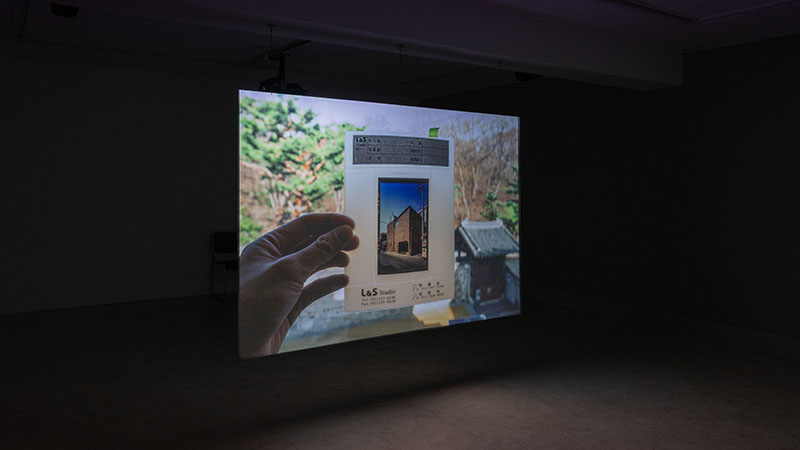
지하 1층
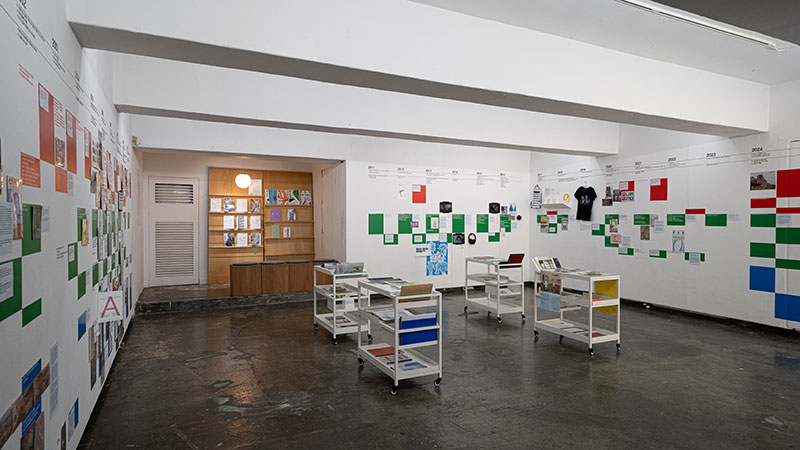
1층
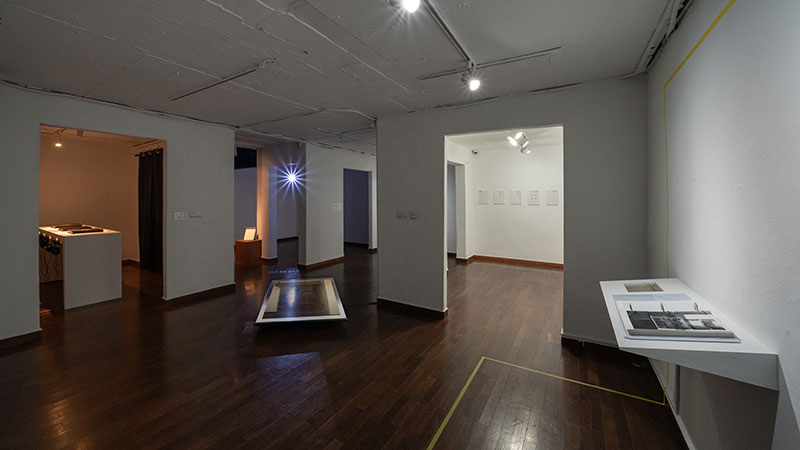
2층
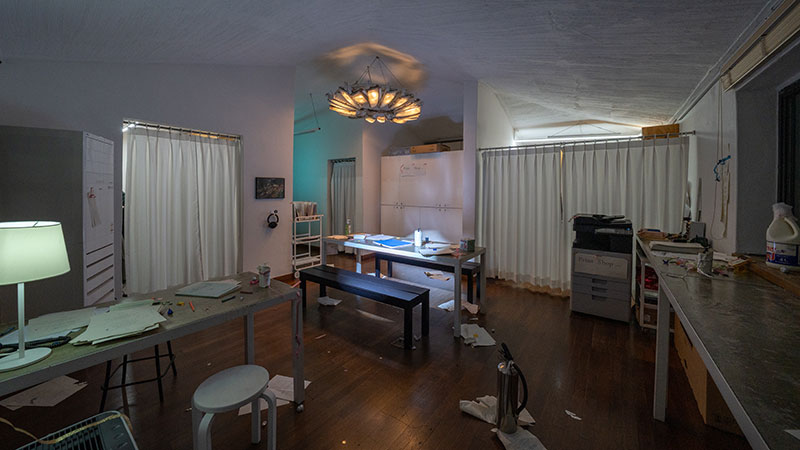
3층
자료담당자[기준일(2025.4.17.)] : 미술관운영팀 김미정 02-760-4617
게시기간 : 25.4.17. ~
Insa Art Space Closing Exhibition 《That (This) Space》

▣ Overview
- Title : Insa Art Space Closing Exhibition 《That (This) Space》
- Artist and Curator : Gim Ikhyun, Rho Jae Oon, dark-dark tourist, Pak Boma, Sulki and Min, Art-Talker (Kim Malgeum, Kim Myungjin, Ryu Heeyeon, Mun Jinju, Lee Sunju, Lee Sora, Ji Ha-un, Ha Sukyung, and Hwang Jiwon), Uhm Jieun
- Period : April 29 – June 1, 2025
- Opening Hours : 11:00 AM—7:00 PM/ Closed on Mondays
- Venue : Insa Art Space
- Admission : Free
- Host : Arts Council Korea
▣ Introduction
We now stand before images and texts, each originating from different points in time at Insa Art Space (IAS)—a space that is closing, a space that has chosen to bow out to be the past, and a space whose future is unthinkable. How can we possibly organize and explain the languages and voices left behind? This is not a sentimental monologue lamenting over an ending. Instead, it is a contemplation of where the story of IAS's twenty-five years should begin and which moments should be revisited, though a vast amount of records are available—transcripts, emails, documents, and catalogs produced by IAS. The exhibition That (This) Space engages with IAS through abstract questions and tasks—what and where.
A linear enumeration of materials can hardly do justice to IAS's stories or defining characteristics. IAS may be summarized by the word "support," which was the apparent purpose behind the birth of the space; however, that alone does not explain why IAS has become that or this space for so many people. Transcending its function as a physical venue for viewing and presenting exhibitions, IAS has served as a platform for exchange and collaboration for some and a site where research, discussion, critique, and criticism were engaged on equal footing. As such, each person describes IAS in various ways depending on their experience—often referring to it as that (or this) space. On the other hand, with its identity as an alternative, non-profit space run by a public institution as a fundamental base, IAS constantly agonized over taking up new responsibilities while negotiating its past, present, and future. However, this process was not (or could not be) without persistent hurdles. Thus, sharply divergent perspectives have been on the twenty-five years of IAS and the space itself. The exhibition That (This) Space acknowledges the many facets of IAS evoked by its name and explores how these aspects are interconnected. Furthermore, the exhibition examines how the history of IAS and the concerns surrounding its closure can be conveyed to both the present and the future by overlapping IAS's twenty-five-year timeline with that of the Korean art world.
The 1999 Korean Currency Crisis led to decreased support for non-governmental organizations in the arts. As part of the art policy to address this issue and revive the environment for creative practice, the Korea Culture and Arts Foundation (now Arts Council Korea) recognized the need to provide spatial support for visual artists to present their works. As a result, IAS opened its doors on the third floor of the Insa Art Center building and began presenting exhibitions selected through open calls. While providing long-term support and organizing its exhibitions and programs—setting it apart from other alternative spaces—IAS was relocated to the third and fourth floors of the Hakgoje building (currently home to Galleryis) in Gwanhun-dong. Beginning in 2005, IAS launched various projects and continued to present exhibitions from open submissions. In collaboration with the Pidgin Collective (Lim Minouk and Frederic Michon) and Mikyung Lee, allowing artists' perspectives and interpretations to intervene, IAS established the IAS Archive, which played a dynamic role in later projects and exhibitions at the venue. Additionally, programs to support emerging artists and facilitate international exchanges were created. Finally, in 2006, the Special Exhibition Hall of the Buddhist Museum in Wonseo-dong was renovated for IAS—granting it a standalone venue. In this unique four-story building, including the basement, IAS aimed to serve as "a space that bridges the before and after the exhibition," moving beyond its role of providing opportunities for presenting works and exhibition curations.(1) Moreover, as policy-related interests in international exchange and globalization grew, and such duties were assigned to IAS, research began on locality with both Western and so-called "Third World" nations, including Vietnam and the Middle East, extending its efforts into publication, exhibition, and other programs. Thus, until 2008, IAS underwent a period of moving beyond its initial mission of supporting artists and producing discourse while balancing various artistic practices, such as exhibitions, archiving, seminars, workshops, and publications. This is how IAS gradually developed its responsibilities, constantly wrestling with its intertwined identities and systems as an art space, public institution, and organization.
In 2009, all the key components that determined IAS were integrated into ARKO Art Center, reaffirming IAS as a space that advocates for artists and curators. Still, IAS remained a hub for various creative individuals. Though the project names and application process changed—from the ARKO Young Art Frontier (AYAF) in 2009 to the ARKO Creative Academy (2016), for example—IAS has always been interlinked with projects aimed at supporting emerging artists, establishing itself as a space that introduces new artists. While operating its twentieth-anniversary archive project titled IAS 2000-2020, IAS also administered IAS Studio (2020-2022), Monthly IAS (2021-2022), and Art Talk (2021-2023), an art professional training program.
Despite its accumulating list of exhibitions and programs, questions about "what kind of space"1) IAS was raised more frequently. Everything around IAS in the art world rapidly changed, and the pursuit of new ideas grew urgently. Still, IAS clung to terms like "support," "young," and "emerging," wavering into a space that was neither new nor old. Uncertainty surrounded whether the space would continue, and the gap between external expectations and internal concerns widened. Since the elements making up IAS were always rooted in the past, pushing the boundaries of an art space, as it had before, revealed many areas in need of improvement. This did not necessarily indicate a lack of budget or human resources. It was also about reflecting on which identities of IAS could remain relevant while reproducing and referencing past experiments and practices; furthermore, it raised the question of whether those around and within had maintained their faith in IAS. Continuously having to renew and reconsider its direction and responsibilities, and after going through ongoing and incomplete discussions, IAS will soon become a point of reference from the past.
Let us revisit the question posed at the beginning of this text and attempt to complete it: what about and where should IAS be examined or explored? That (This) Space introduces perspectives not previously considered for re-reading IAS. Artists and curators who have participated in IAS programs recall their memories about the space. Thus, this IAS, which is composed of the outlooks of those inside and outside the art world, embraces the past, present, and future. In this context, IAS may or may not be represented by its accomplishments or as an outcome; instead, the space is made up of images that linger like ghosts. There are voices questioning how aligned or misaligned IAS has been with the art world or institutions and how the missing languages in between should be reconstructed or interpreted. In 2025, IAS has become a place where the responsibilities of today's art and its mode of operation are discussed while serving as an unresolved answer to the meaning of its closure. Instead of reflecting on the discontinuation of a space by compiling documents, That (This) Space investigates the unfinished tasks for IAS as well as every one of us. Rather than defining what kind of IAS was or has been, asking how it became that or this space we know and tracing the circumstances and positions that shaped it—can only be done as its end is on the horizon.
1) Baek Ji-Sook, a former Chief Curator at IAS, once said, "IAS organizes exhibitions, but the emphasis lies on what comes before and afterthe exhibition. (...) IAS's role is not limited to helping present an exhibition that lasts a week or a month; its critical work will be to connect the processes involved at the beginning and the end of an exhibition and to provide extended support."
"ARKO Meets Art: Hello IAS!" Webzine ARKO, vol. 12 (March 2006).
자료담당자[기준일(2025.4.17.)] : 미술관운영팀 김미정 02-760-4617
게시기간 : 25.4.17. ~